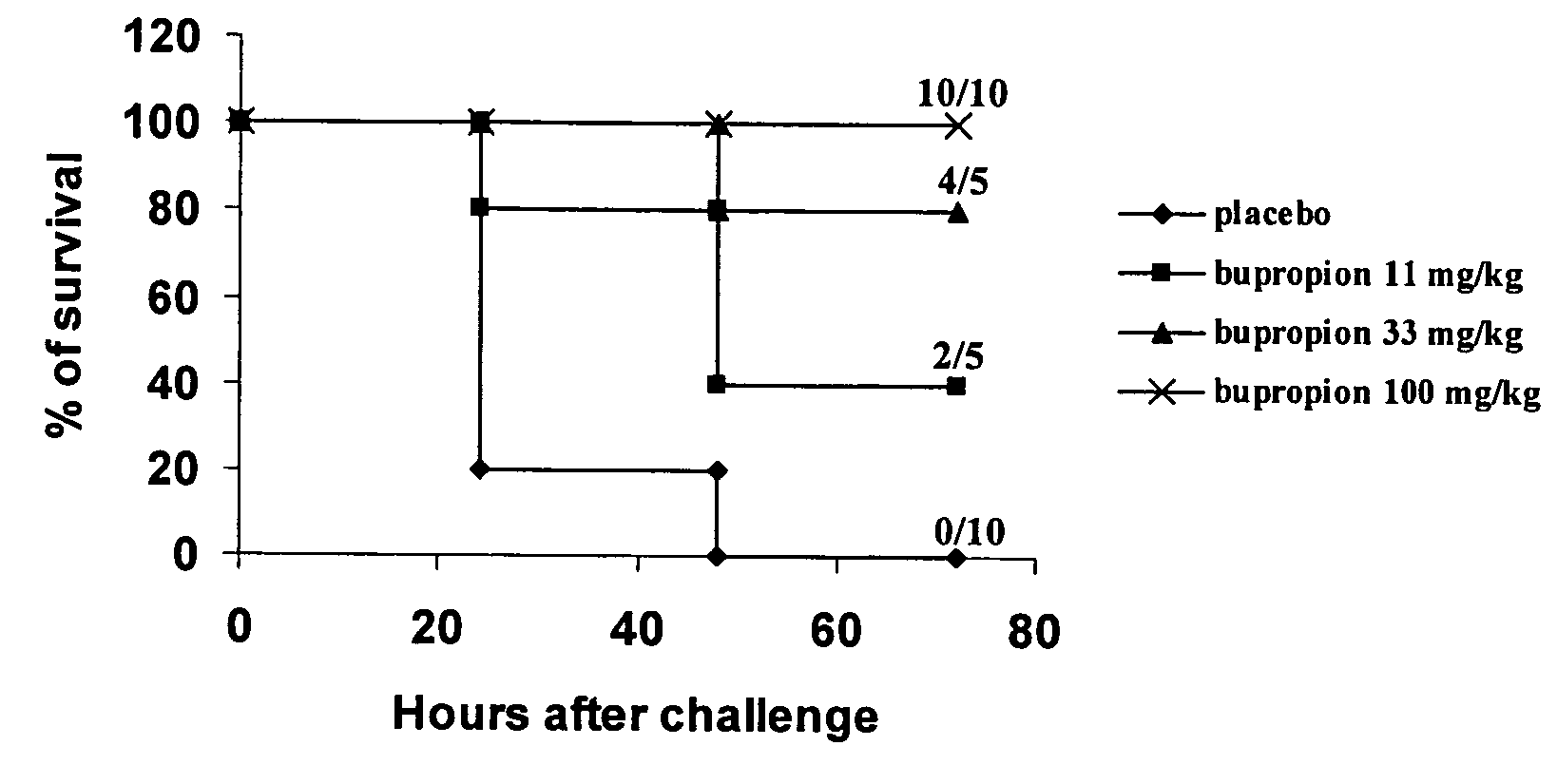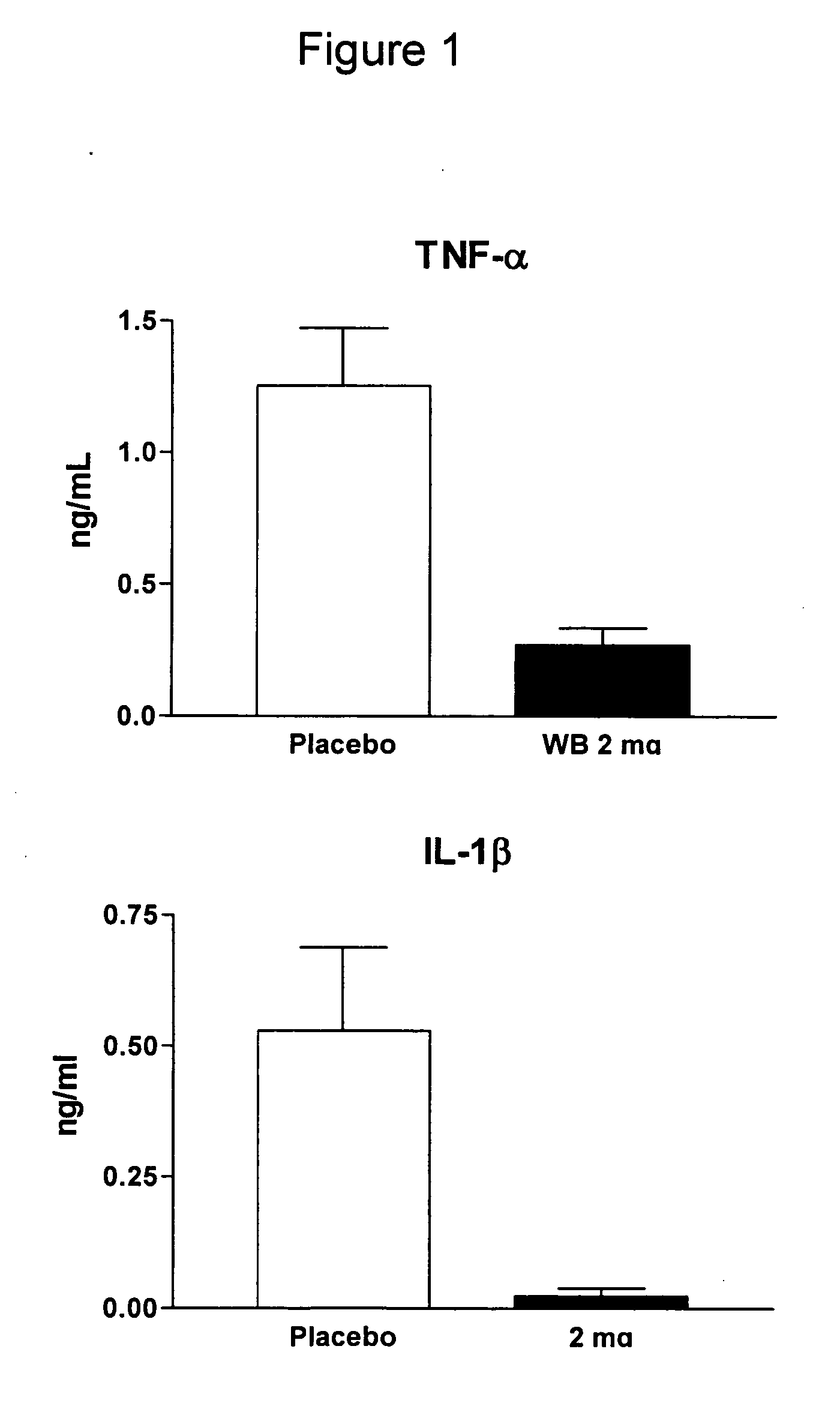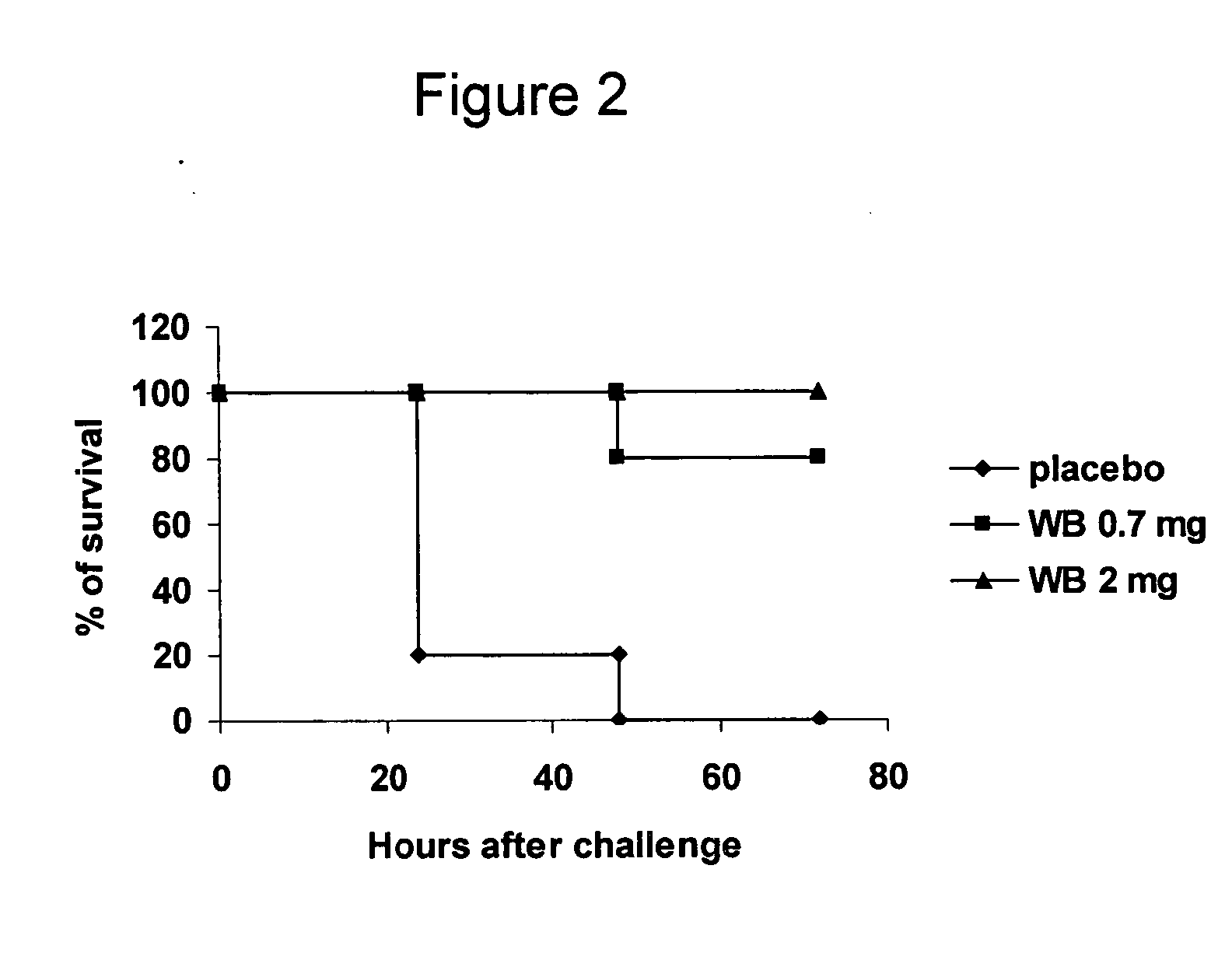Methods of modulating TNF using bupropion
a technology modulation method, which is applied in the field of tumor necrosis factor (tnf) antagonists or tnf blockers, can solve the problems of unsatisfactory current treatment of these conditions, none of these modalities have been very successful, and the inflammatory cascade is downregulated, so as to reduce inflammation in patients, slow disease progression, and improve the effect of these conditions
- Summary
- Abstract
- Description
- Claims
- Application Information
AI Technical Summary
Benefits of technology
Problems solved by technology
Method used
Image
Examples
Embodiment Construction
[0056] Cytokines and growth factors, the cellular mediators of the immune system, have profound effects on disease processes. The immune system is finely balanced either directly by the activities of pro-inflammatory and anti-inflammatory mediators or indirectly by their ability to regulate the production of other immunoregulatory molecules. Unregulated activities of these mediators can lead to the development of serious inflammatory and other diseases. Enhanced tumor necrosis factor-(TNF-) and interleukin-1 (IL-1) levels are associated with the development of rheumatoid arthritis, psoriatic arthritis and inflammatory bowel disease.
[0057] Provided herein are methods of ameliorating TNF-associated diseases by administering an effective amount of a pharmaceutical composition that includes bupropion. Pharmaceutical compositions of the invention may be in unit dosage form such as tablets, pills, capsules, powders, granules, elixirs, syrups, emulsions, ampoules, suppositories or parente...
PUM
| Property | Measurement | Unit |
|---|---|---|
| soluble | aaaaa | aaaaa |
| endothelial adhesion | aaaaa | aaaaa |
| weight | aaaaa | aaaaa |
Abstract
Description
Claims
Application Information
 Login to View More
Login to View More - R&D
- Intellectual Property
- Life Sciences
- Materials
- Tech Scout
- Unparalleled Data Quality
- Higher Quality Content
- 60% Fewer Hallucinations
Browse by: Latest US Patents, China's latest patents, Technical Efficacy Thesaurus, Application Domain, Technology Topic, Popular Technical Reports.
© 2025 PatSnap. All rights reserved.Legal|Privacy policy|Modern Slavery Act Transparency Statement|Sitemap|About US| Contact US: help@patsnap.com



